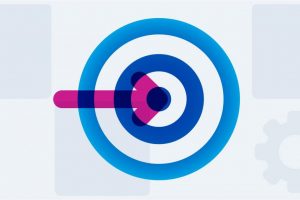In the heart of Boston, 12-year-old Tim stared at his notebook, struggling with fractions while his sister breezed through a history assignment next to him. But, hand him a guitar, and those notes made perfect sense. Why? Because Tim, like all of us, has a unique “learning language”. Understanding this language unlocks our full potential, making education not just a chore, but a joy.

Understanding the Learning Styles
Learning styles are the ways we naturally perceive and process new information. Researchers have explored these extensively, and while no one fits neatly into one box, most of us lean towards one or a combination of styles.
-
Visual Learners: Imagine a student who can recall the exact page and position of a piece of information in a textbook. They think in pictures, often benefitting from diagrams, charts, and visual aids.
-
Auditory Learners: These are the individuals who benefit from listening. They may read aloud, listen to podcasts, or use mnemonic devices with sounds. They remember verbal instructions well and can often recall details from conversations or lectures.
-
Kinesthetic Learners: Movement is key for these learners. They need hands-on experience and activity-based learning. Labs, physical exercises, and on-the-job experiences are their forte.
Diving Deeper into Each Style
Visual Learners thrive in environments where information is presented visually. They:
- Prefer graphs and charts to raw data.
- Often doodle or draw to understand concepts.
- Benefit from color-coded notes.
Auditory Learners shine when information is auditory. They:
- Might read aloud when studying.
- Enjoy group discussions and debates.
- Often have a strong sense of rhythm and can appreciate music deeply.
Kinesthetic Learners excel when they can move and touch. They:
- Enjoy field trips, labs, and hands-on classes.
- Might struggle to sit still and prefer walking or moving while thinking.
- Can understand complex theories when they can “do” rather than just “see” or “hear”.
Personal Stories: Embracing Unique Styles
Emma’s Visual Voyage: Emma was a high schooler in San Francisco. While her grades in Art and Geometry soared, dense textual subjects like History stumped her. Once she started converting historical events into illustrated timelines, her retention and understanding skyrocketed.
Lucas Listens: Lucas, a college student in Texas, realized his strength when he started recording his lectures. Playing them back during his commute, he found he could recall even minute details.
Nina’s Kinesthetic Quest: Chicago-based middle schooler Nina never quite connected with math until she started measuring ingredients for cooking. Through baking, she grasped ratios, fractions, and measurements.
Tools and Techniques for Each Style
For Visual Learners:
- Infographics, flowcharts, and mind maps.
- Highlighters and colored pens for note-taking.
- Educational platforms with rich visual content.
For Auditory Learners:
- Audiobooks and educational podcasts.
- Recording lectures or discussions for playback.
- Rhythmic mnemonic devices.
For Kinesthetic Learners:
- Role-playing games for historical events or literary works.
- Physical models or DIY kits for scientific concepts.
- Active study breaks for stretching or quick exercises.
Adapting and Overcoming
Understanding one’s primary learning style isn’t about boxing oneself in, but about leveraging strengths. It’s essential to remember that the human brain is versatile. While one may have a preferred style, with practice, they can improve in other areas as well.
In Conclusion
The world of learning styles is vast and diverse. It’s not a one-size-fits-all scenario. By recognizing and embracing our unique “learning language”, we not only make education more effective but also more engaging. Teachers, parents, and learners all play a role in this journey of discovery and growth. After all, when we truly understand how we learn, the horizons of what we can learn are limitless.















Add Comment